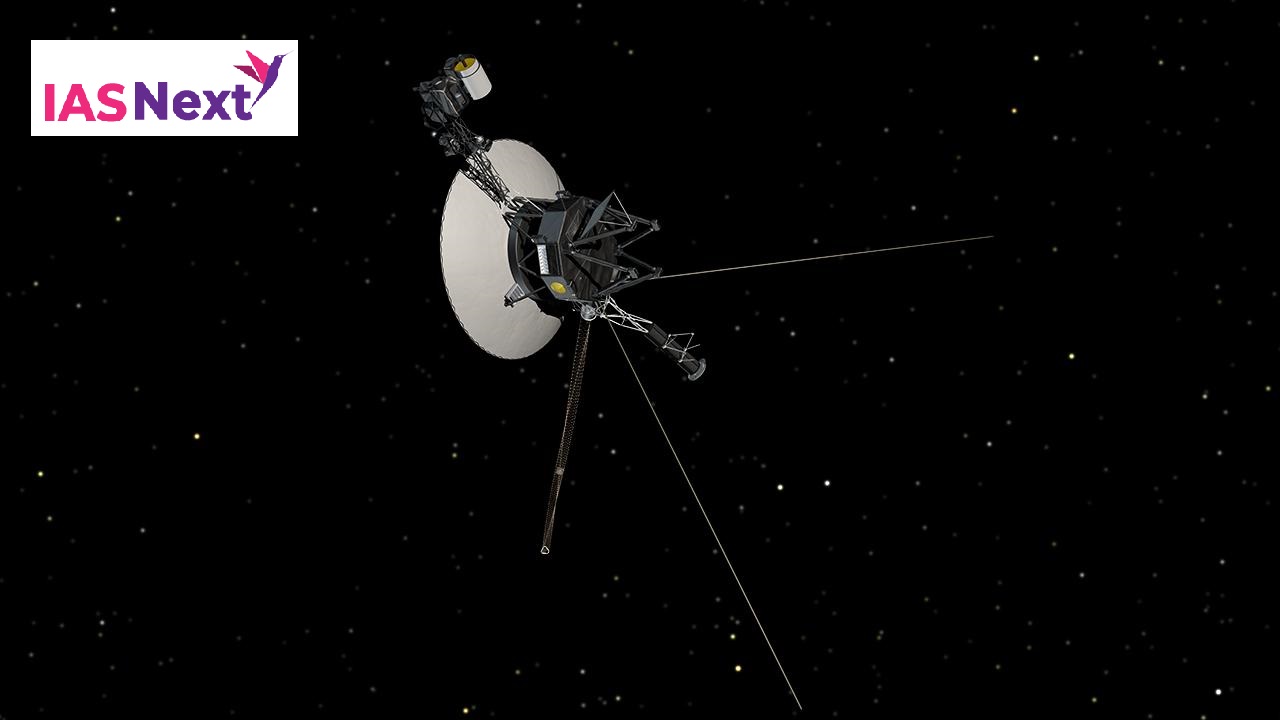CURRENT AFFAIRS
Get the most updated and recent current affair content on Padhaikaro.com
NASA’s Voyager spacecraft
- IAS NEXT, Lucknow
- 28, Mar 2022

Reference News:-
Both Voyager spacecraft are rushing away from Earth and into interstellar space. Yet for a portion of every year, both spacecrafts’ distances to Earth decrease.
Why is it so?
- The answer is that for a few months each year, Earth in its orbit moves toward the spacecraft faster than they’re moving away. Earth’s motion around the sun is faster than the motion of the Voyager spacecraft.
- Earth moves through space at a speed of 67,000 miles per hour (30 km/s). Voyager 1 moves at a speed of 38,210 miles per hour (17 km/s). Voyager 2 moves at a speed of 35,000 miles per hour (15 km/s).
- So, for a portion of the year, Earth comes around the side of the sun and is speeding toward the spacecraft faster than they’re moving away.
Therefore their distances to Earth are getting closer, if only temporarily. They never change their outward motion. It is we who change.
About Voyager mission:
- Launched in the 1970’s, and the probes sent by NASA were only meant to explore the outer planets – but they just kept on going.
- Voyager 1 departed Earth on 5 September 1977, a few days after Voyager 2 and left our solar system in 2013.
- The mission objective of the Voyager Interstellar Mission (VIM) is to extend the NASA exploration of the solar system beyond the neighborhood of the outer planets to the outer limits of the Sun’s sphere of influence, and possibly beyond.
- The Voyager spacecraft are the third and fourth human spacecraft to fly beyond all the planets in our solar system. Pioneers 10 and 11 preceded Voyager in outstripping the gravitational attraction of the Sun but on February 17, 1998, Voyager 1 passed Pioneer 10 to become the most distant human-made object in space.
Accomplishments so far:
Voyager 2 is the only probe ever to study Neptune and Uranus during planetary flybys.
It is the second man-made object to leave our planet.
Voyager 2 is the only spacecraft to have visited all four gas giant planets — Jupiter, Saturn, Uranus and Neptune — and discovered 16 moons, as well as phenomena like Neptune’s mysteriously transient Great Dark Spot, the cracks in Europa’s ice shell, and ring features at every planet.
What is Interstellar space?
Scientists use the heliopause to mark where interstellar space begins, although depending on how you define our solar system it can stretch all the way to the Oort Cloud, which begins 1,000 times farther away from the sun than Earth’s orbit.
The Heliosphere:
The heliosphere is a bubble around the sun created by the outward flow of the solar wind from the sun and the opposing inward flow of the interstellar wind. That heliosphere is the region influenced by the dynamic properties of the sun that are carried in the solar wind–such as magnetic fields, energetic particles and solar wind plasma. The heliopause marks the end of the heliosphere and the beginning of interstellar space.